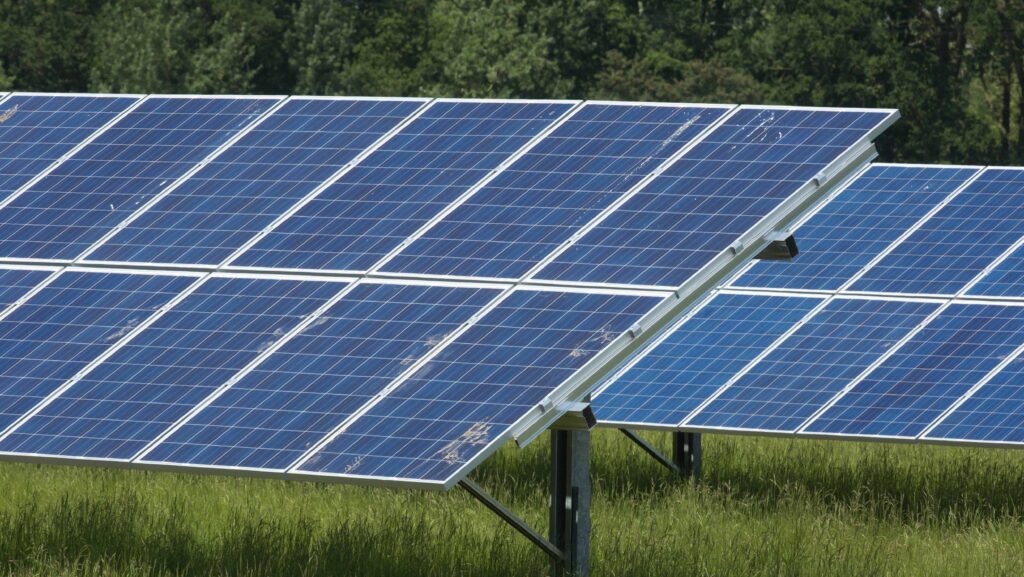Vast areas of land taken out of food production for solar sites
 © Tim Scrivener
© Tim Scrivener Government approval for several major solar infrastructure projects will result in thousands of acres of farmland being taken out of food production.
The government has recently approved three major solar farms, capable of powering 400,000 homes, as part of its target to achieve clean energy by 2030.
Large-scale solar developments have benefited from Nationally Significant Infrastructure Project (NSIP) status, which has allowed them to bypass typical planning requirements by local authorities.
See also: Solar grants for farm projects – what’s covered and how to apply
Energy secretary Ed Miliband said: “As we accelerate our plan for clean power by 2030, the government will work with the industry on how we can build on this success to ensure we can go even further and faster to deliver the power we need.”
Return for landowners
Solar sites can provide a reliable fixed additional income stream for landowners and, as direct payments are reduced, this can help support existing farming operations.
John Wallis, director at Yorkshire-based land agents GSC Grays, says solar farms rents typically range from £850/acre to £1,200/acre a year.
He added: “We’ve seen a big influx of solar schemes over the last five years, largely because the financial viability of the projects has improved.
“What’s happened more recently is that the price of the equipment, such as solar panels and batteries, has come down, and, of course, the energy price has gone up. Suddenly, these projects are viable on their own.”
Tenant farmers at risk
An influx of solar sites nationwide would lead to disruption for many farm businesses, with tenant farmers likely to be some of the most adversely affected if land is taken back by landowners to be placed into solar projects.
At the NFU conference in February 2023, Sir Keir Starmer, then the opposition leader, spoke about plans to increase the number of solar farms and the need to support tenant farmers as part of that process.
Sir Keir said: “Tenant farmers need a fair deal; they need to know their futures are secure. I want to see more solar farms across the countryside, we have got high hopes for energy in our green prosperity plan. There will be opportunities for farmers, opportunities for rural growth, cheaper bills, and in the long term real energy independence.
“But we can’t do it by taking advantage of tenant farmers – farmers producing good British food on carefully maintained fertile land. They can’t plan properly if the soil beneath their feet isn’t secure.”
However, the Tenant Farmers Association (TFA) is apprehensive that decisions to reject solar farms by local planning authorities could be overlooked and allow applications to be pushed through.
TFA chair Robert Martin said they had seen cases where farming tenants had won planning disputes with the local council, and then landlords with money behind them from solar developers had taken it to an appeal.
Mr Martin said: “Solar has become a bit of a political football. Everybody wants to be associated with it because it is the green thing to do, but they seem to forget that to allow that to happen you have the loss of prime agricultural land and you have the loss of people’s livelihoods.
“Tenants are given notice to quit whether it is on a grazing licence, FBT [farm business tenancy], or AHA [Agricultural Holdings Act] tenancy, and it is a great shame because tenants are being given very little compensation for the loss of their livelihoods.”
He concluded: “It seems very unfair that someone should lose their livelihood and in return for that the landowner gets public money.”
UK’s largest solar site
The most significant of the newly approved sites is the 600 megawatt Cottam solar farm covering parts of Lincolnshire and Nottinghamshire, due to be the largest in the UK at 1,450ha.
Local Lincolnshire councillor Thomas Smith told Farmers Weekly that it would damage both the agricultural sector and tourism industry, which the county and especially West Lindsey rely on.
“The NSIP process needs reform urgently and solar farms on agricultural land and onshore wind should be a matter for local decision makers, not the secretary of state, especially one who has a clear bias on such matters,” said Mr Smith.
“The government are exacerbating an already serious lack of support for our farmers and this has to change if we want farmers to feel that farming is viable into the future.”
However, Stephen Wilding, director of business development at Solar Energy UK, welcomed the announcement and said it provided confirmation of the government’s support for the solar sector.
Meanwhile, in Northamptonshire, a proposal for a 500 megawatt solar site capable of powering more than 100,000 homes has faced a backlash by local campaigners who are calling for solar panels to be fitted to warehouse roofs rather than being placed on prime agricultural land.
The Green Hill solar development in Northamptonshire is expected to cover roughly 1,200ha and is due to be put forward for statutory consultation later this year.
